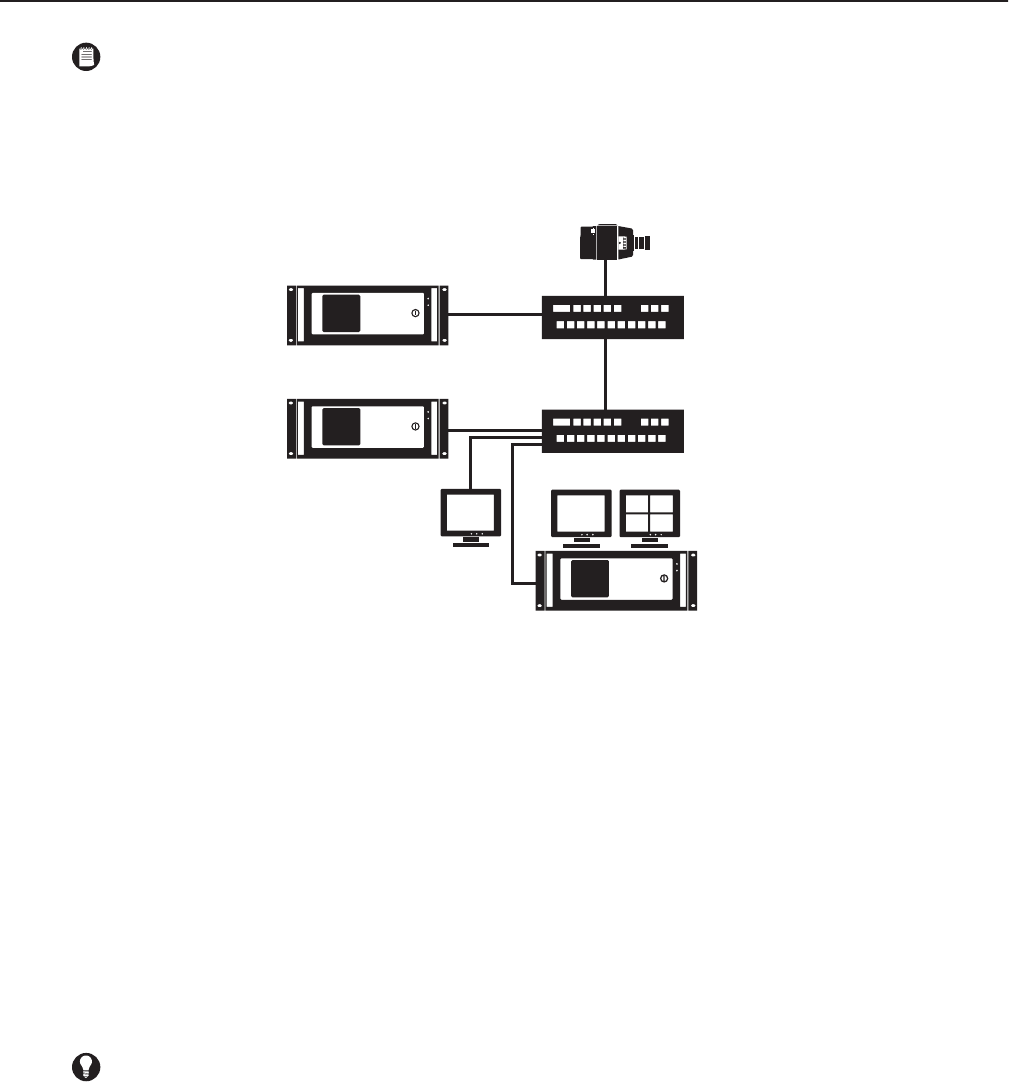
238 C1553M-B (4/05)
Server Ties
Share signals: Server ties enable one server to share signals, such as video or audio, with another server. For example, if you have a camera
configured on one server, and you want to view the camera’s video on a destination (for example, external monitor or custom window) configured
on a different server, you must define a server tie. In Figure 260, Server A has a server tie to Server B so the camera’s video can be viewed on the
monitor or client.
Figure 260. Server Tie
To access signals over the server tie illustrated in Figure 260, operators must be logged in to both servers, typically with Server B as their home
server. Logging in to Server A gives the remote operator access to Server A’s maps and devices, provided the operator’s Server A user account
grants the necessary privileges. To limit a remote user’s access to maps and devices, restrict the user’s permissions in the Server A configuration
exactly as you would any other user.
Operators load video from a remote server the same way they load video from their home server: by dragging the camera from the Device List or
from a map to the destination.
Signal types: You must define a server tie for each type of signal you want to share. Signals fall into two broad categories: analog and IP. The
specific types of IP and analog signals depend on the equipment configured on your server. Analog signal types can include Analog Video, VGA
Video, and Audio. IP signal types are specific to the models of IP encoders configured on your server. For each analog server tie you configure, you
must add a connection on both servers to map out the physical connections between devices.
Number of simultaneous destinations: A server tie allows a signal to be transmitted to one destination at a time. If you want to transmit
signals to more than one destination at one time, you must define a server tie for each destination. For example, if you want to be able to display
video from a remote server in all four video windows provided by a quad card, you must configure four server ties, one for each window.
Define scripts: Configuring a server tie provides Server B with limited access to Server A’s devices for scripting. Specifically, Server B can use
the SET command to load the signal from a device configured on Server A. For example, to automatically load video from Server A’s Cam1 into
Server B’s Window1, use the following statement:
SET Window1.LiveSource = Cam1_RS.Output
Server B has no access to the read and write properties of devices configured on Server A.
The ability to script signal loading results from adding Server A’s remote server driver to the Server B configuration. Server A’s devices appear as
Sources in the Object Browser. Refer to Configure a Server Tie for instructions on adding a remote server driver.
NOTE: Server ties are available only with VMX300-E systems.
TIP: IP server ties enable you to limit bandwidth between servers across wide area networks. Several operators viewing remote video at
the same time across a WAN use a significant portion of the available bandwidth. Server ties limit the bandwidth used for remote video by
limiting the number of operators who can view remote video at one time to the number of server ties configured.
CAMERA
VMX SERVER A
VMX SERVER B
SWITCHER A
PHYSICAL TIE LINE
BETWEEN
SWITCHERS
SWITCHER B
VMX300(-E) CLIENT
WITH CUSTOM WINDOWS
MONITOR


















